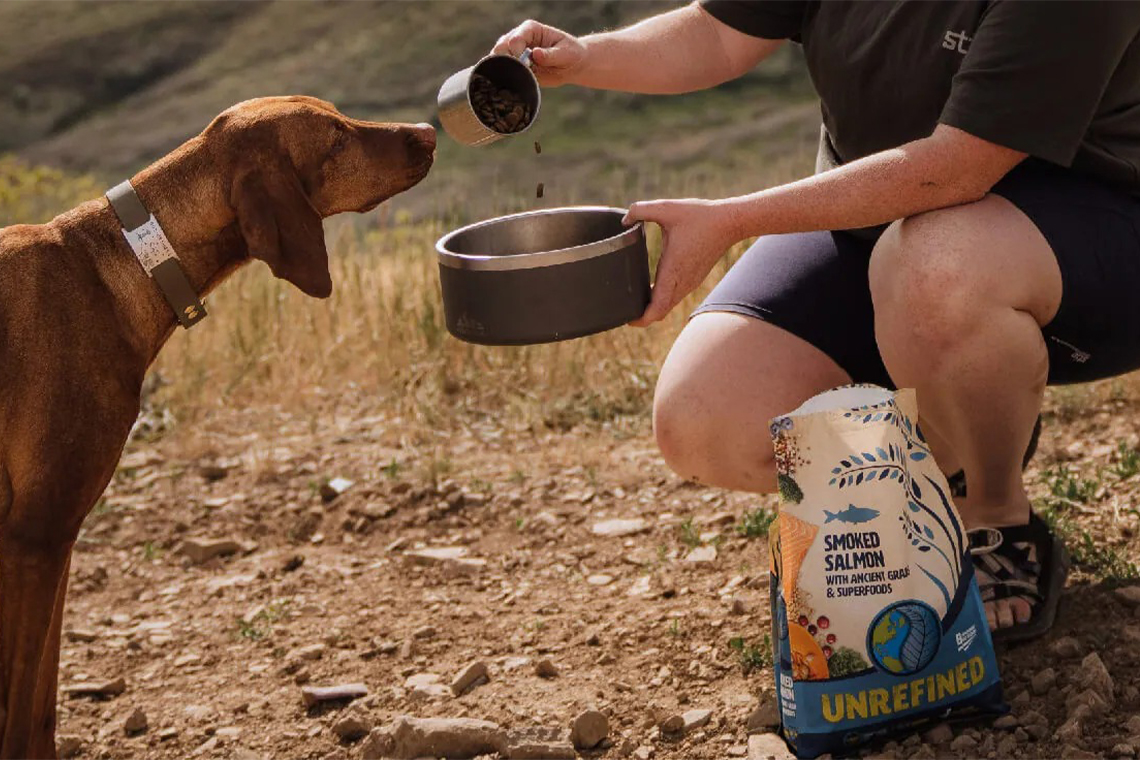Healthy food, happy dog – Tips for managing dog food portions
Dogs are undoubtedly one of the most beloved animals in the world. They provide us with endless love and affection, and in return, we try to give them the best possible life. One of the essential aspects of dog care is feeding them healthy food in the right portions. But with so many dog food options available, how do you determine the right amount to feed your furry friend? Here are some tips for managing healthy dog food portions.
Calculate the right amount of food
Before deciding how much food to give your dog, you need to know how many calories they need daily. The amount of food a dog needs depends on several factors, such as age, weight, activity level, and health status. A healthy adult dog requires about 30 calories per pound of body weight per day. But this may vary depending on your dog’s breed, age, and activity level.
For instance, a small Chihuahua will require less food than a larger breed like a Great Dane. Similarly, a senior dog that is less active will need fewer calories than a young, active dog. To calculate the right amount of food for your dog, you can use a dog food calculator or consult with your veterinarian.

Follow the feeding guidelines on the dog food label
Most dog food brands provide feeding guidelines on the label, which is an excellent starting point. These guidelines give you an idea of how much food to give your dog based on their weight. However, these guidelines are not always accurate for every dog, so you may need to adjust them based on your dog’s individual needs.
It’s essential to read the label and check the ingredients to make sure the food is appropriate for your dog. Some dogs have specific dietary requirements or allergies, and it’s important to choose food that meets those needs.
Use a measuring cup to portion out your dog's food
Eyeballing your dog’s food portions may result in overfeeding or underfeeding, which can lead to weight gain or malnutrition. Using a measuring cup to portion out your dog’s food ensures that they get the right amount of food every time. It also helps you keep track of how much your dog is eating, which can be helpful if they have health issues or are trying to lose weight.
Split your dog's meals into two or three feedings per day
Feeding your dog one large meal a day can lead to digestive problems or bloating. It’s best to split their meals into two or three smaller portions to ensure proper digestion and avoid overeating. This also helps to maintain their energy levels throughout the day.
Avoid feeding your dog table scraps
While it may be tempting to share your food with your furry friend, table scraps are not appropriate for dogs. Human food is often high in calories, salt, and fat, which can lead to weight gain and other health problems. Some human foods can even be toxic to dogs, such as chocolate, onions, garlic, and grapes.
Limit treats and snacks
While treats are an excellent way to reward your dog for good behavior, it’s essential to limit their intake. Treats are often high in calories and can quickly add up, leading to weight gain. Try to limit treats to 10% of your dog’s daily calorie intake, and choose healthy options like carrots, green beans, or small pieces of cooked chicken.
Monitor your dog's weight and adjust their food intake accordingly
Regularly monitoring your dog’s weight can help you determine if they are at a healthy weight or need to lose weight. If your dog is gaining weight, it may be time to adjust their food intake and exercise routine. Similarly, if they are losing weight, you may need to increase their food intake or consult with your veterinarian to rule out any underlying health issues.

Consider your dog's activity level
The amount of food your dog needs can also depend on their activity level. A dog that is very active, such as one that goes on daily runs or plays fetch often, may need more calories than a sedentary dog. Consider your dog’s activity level when determining the right amount of food to give them.
Be mindful of your dog's age
As dogs age, their nutritional needs may change. Senior dogs may require food that is easier to digest or has fewer calories to prevent weight gain. Puppies, on the other hand, require food that is higher in calories and protein to support their growth and development. Consult with your veterinarian to determine the best food for your dog based on their age.
Be consistent with your dog's feeding schedule
Dogs thrive on routine, and a consistent feeding schedule can help them feel secure and content. Try to feed your dog at the same time every day and avoid making sudden changes to their feeding schedule. If you need to make any changes, do so gradually over several days to help your dog adjust.
To Conclude
Managing healthy dog food portions is crucial for your furry friend’s overall health and wellbeing. By calculating the right amount of food, following the feeding guidelines on the dog food label, using a measuring cup to portion out your dog’s food, splitting their meals into two or three feedings per day, avoiding feeding your dog table scraps, limiting treats and snacks, monitoring your dog’s weight, considering their activity level and age, and being consistent with their feeding schedule, you can ensure that your dog stays healthy, happy, and well-fed.












